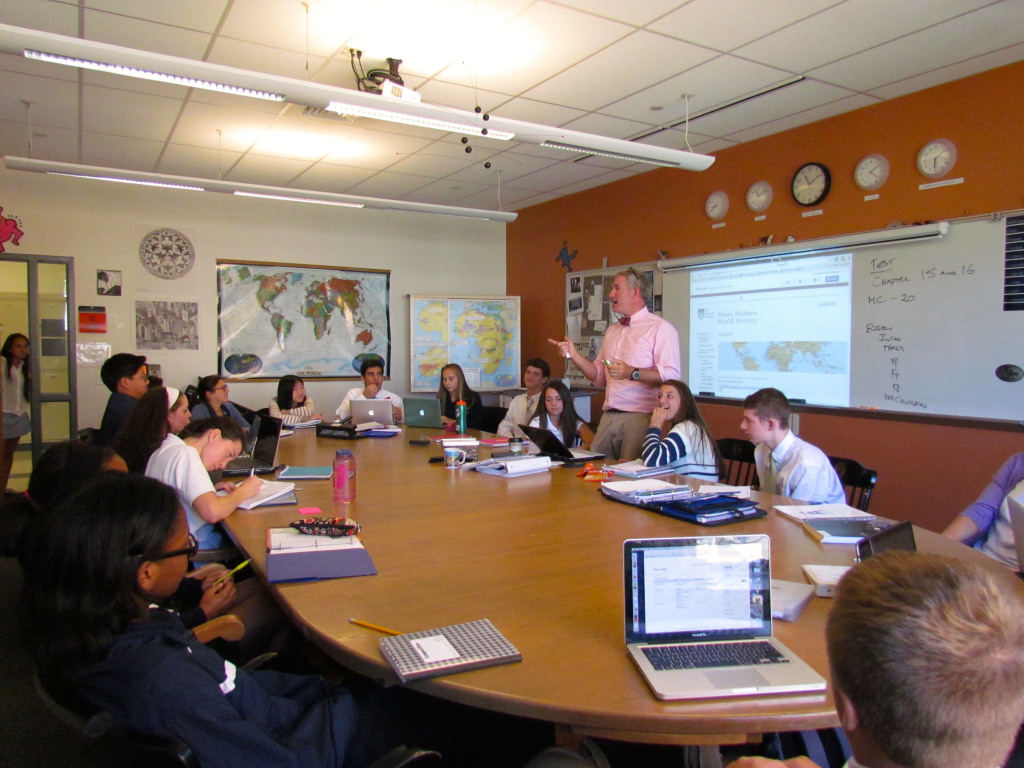Nadiyah Browning ’16, Sonam Saxena ’17: The Episcopal Academy has often prided itself on its small class sizes. However, many are feeling worried that class sizes are increasing. While the statistical data remains unknown, we have seen certain class sizes go from an intimate seven to a crowded seventeen-plus. If class sizes increase, it will negatively affect the way students are learning and interacting with teachers.
Smaller class sizes are credited with allowing more interactive learning between teachers and students, as well as between students themselves. Smaller numbers in the classroom create a more open environment for students to speak up and participate, which can also result in more efficient class discussion.
Yet, there are still some who believe large class sizes are beneficial in teaching kids independence and including more points of view. However, what happens when one teacher looks out to a sea of 20 confused stares while lecturing, facing the nearly impossible task of clarifying the material to a wide variety of students with varying strengths and weaknesses in the subject area?

Photo Courtesy of Bradlie Morgan ’16
Larger class sizes, especially those approaching 20, take away from the learning experiences a smaller class size is meant to provide. Kris Aldridge, member of the History Department, explained that she finds with class sizes larger than normal, it is difficult to “respond to each student’s learning style and connect with each person during class.” She continued, stating, “There is an ideal class size of 12-14.” Faced with two classes containing 19 students this year, Aldridge has needed to adapt her teaching techniques. She explained that she attempts to gain physical proximity and make eye contact with each student. Connecting with students is her main goal in helping them understand the material; however, this becomes very difficult when the number of students in one room exceeds the early-teens.
Mireya Yaros, Upper School Spanish teacher agreed in preference of smaller classes, stating, “Participation is a large part of learning a language, but with a larger class, there isn’t as large of a chance to speak. Although we have the language lab, it isn’t the same as the importance of face-to-face communication.” In subjects such as Spanish, the face-to-face communication and oral presentation, both lost in overly large class sizes, are “important not only for the AP exams but also in life.” Yet, the language department is not alone in noting that larger classes can distract and take away from the intimate discussions and learning experiences of a smaller class.
In addition, with classes growing, space can become limited and a chaotic environment can result. Many rooms in the Upper School are not equipped with the seating space for over 17 students, leading to uncomfortable and unorganized arrangements in larger classes. Similarly, a greater number of students in a class can provide an opportunity for more distractions, such as side conversations. Teachers who have multiple large sections can become too thinly spread, and valuable outside of class meeting times are less likely to be experienced by all the students that need it.
A smaller learning environment is the hallmark of independent schools. It is important that administrators and trustees continue to work on keeping class sizes small enough to meet individual students’ needs.